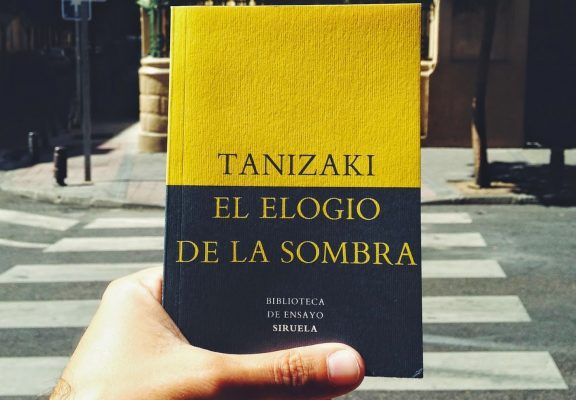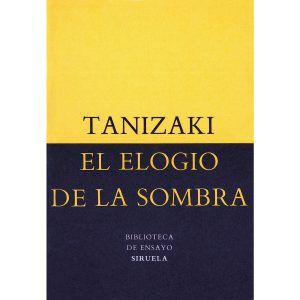

Elogio de la sombra / In Praise of Shadows, by Yun’ichiro Tanizaki
Learning from subtlety

| No. of pages: | 95 |
| Publisher; | Siruela (Biblioteca de Ensayo) |
| Language: | Spanish |
| ISBN: | 9788478442584 |
| Year of release: | 1994 |
| Year of original publication: | 1933 |
| Place of publication: | Madrid |
| Where to buy: | Fnac |
In two sentences:
"Had we invented the phonograph and the radio, how much more faithfully they would reproduce the special character of our voices and our music" "The prerequisites are a degree of dimness, absolute cleanliness, and quiet so complete one can hear the hum of a mosquito"
In 500 characters:
A journey through Japanese culture and character of the 1930s that shows, as much as it hides, the aspects that define the aesthetics not only of that country but of the whole world.
Meandering through various aspects of everyday Japanese life, Tanizaki reveals a world that is as new as it is known, as specific as it is universal.
Why I should read it:
This essay is a benchmark piece for understanding how we approach the visual and sensory analysis of our surroundings today. Written in 1933, the author invites us on a journey through Japan’s sensibility at the time and compares it with the tastes and preferences of other countries.
Written (and translated and edited) masterfully, the text is the best gift that you can give yourself when you want to prepare your mind to analyse something (an image, a proposal, a document) deliberately and thoroughly.
Although it was written by a Japanese person in 1933 and speaks equally about the value of toilets and the qualities of the Japanese oratory tradition, the text has an endless capacity to arouse sensibility through empathy.
It is The Hunter’s most highly recommended and most gifted book, as well as a favourite essay to write about.
7 inspiring pieces of content:
- what is not written: the use of absences and pauses. It’s simply incredible.
- It introduces concepts, such as meditation, that we use differently today. As it was written in 1933, it gives us a new perspective on values and attitudes that have to do with pausing and appreciating the present moment.
- The text wanders between settings, topics, disciplines and points of view with apparent randomness. It is not an exaggeration to say that it captures the attention in a resoundingly linear manner, inspiring much of the contemporary Japanese literature that is so popular today.
- Without forgetting that this Japanese text was written in the 1930s and that it contains certain attributes of its time (it is racist, misogynistic and a bit xenophobic), the text helps us to understand why and how certain aspects of “popular” Japanese society made it to the West.
- Japanese aesthetics prioritise other senses and visual landscapes: in contrast to the brilliance, smoothness and purity of what is considered beautiful in the West, the author elevates the dark, imperfect and blunt and proudly portrays the value of wear from repeated use. Today, when we go to Muji, listen to Marie Kondo or watch Lost in Translation by Sofia Coppola, it all comes from here.
- Almost imperceptibly, the author moves through different roles as he accompanies us through the essay. He is an observer, critic, customer, consumer and victim all at once. He introduces himself as a spectator and an actor, as a player and a referee.
- The text invites the reader to learn to value things that seem mundane and unimportant. Your thoughts on the joints of a window, on the sound of a stove or the colour of different types of bulbs are the perfect inspiration for learning how to elevate the aspects of our brands and products that may seem dull at first.
If you like this text, you might also like:
- The Hare with Amber Eyes, Edmund de Waal
- Brief history of the image, Michel Melot